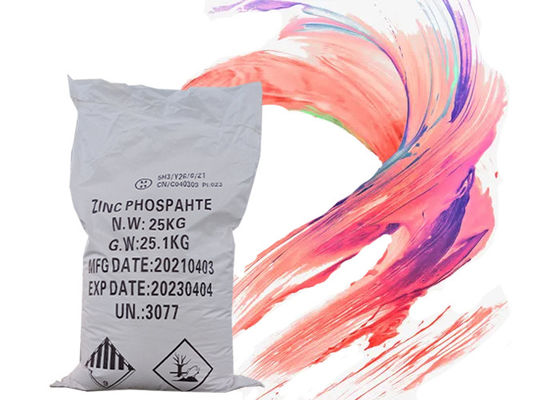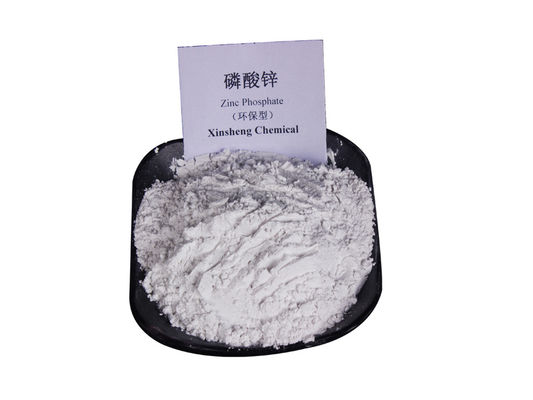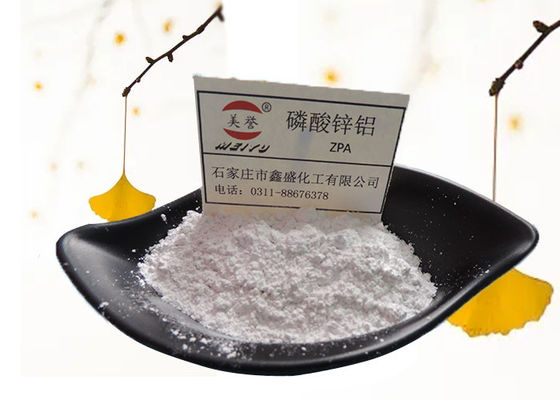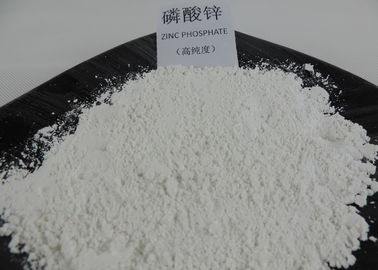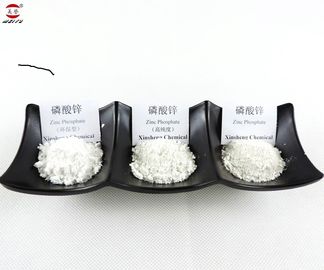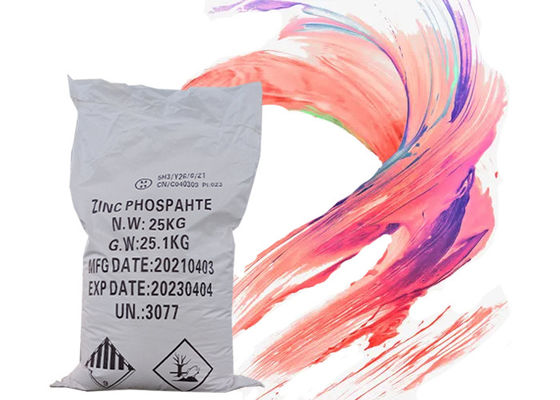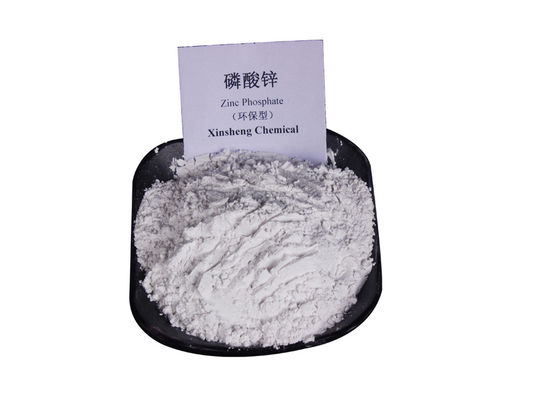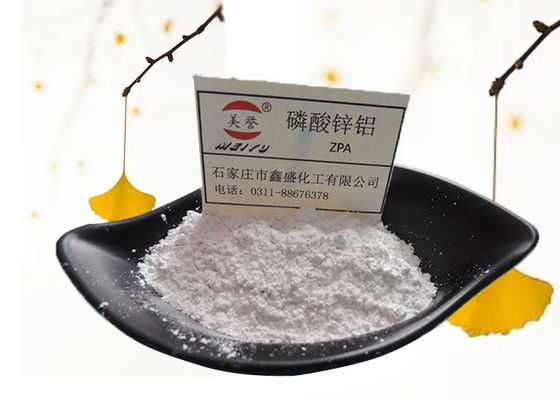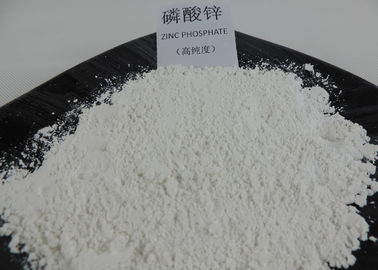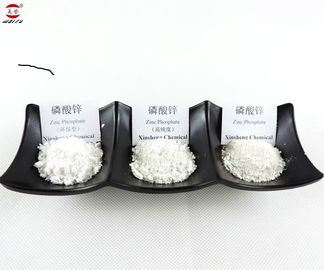Chemical Corrosion Inhibitor 7779-90-0 Antirust Pigment In Paint

Contact me for free samples and coupons.
WhatsApp:0086 18588475571
Wechat: 0086 18588475571
Skype: sales10@aixton.com
If you have any concern, we provide 24-hour online help.
x| Product Type | Antirust Pigment | MF | Zn3(PO4)2.2H2O |
|---|---|---|---|
| CAS No. | 7779-90-0 | Application | Antirust Paint For Ships, Automobiles, Industrial Machinery, Etc |
| Standard Package | Inside Plastic Bag Outside Woven Bag Or Composite Paper Bag | Transportation And Storage | Should Be Stored In A Dry Place. |
| Highlight | chemical corrosion inhibitor antirust pigment,7779-90-0 antirust pigment,antirust pigment 7779-90-0 |
||
Zinc phosphate aluminum tripolyphosphate is used as a chemical corrosion inhibitor in paint
1.Usage:
The anti-rust pigments with chemical corrosion inhibition effect change the properties of the surface or the characteristics of the reaction products according to the chemical reaction to achieve the purpose of anti-rust. Anti-rust pigments with chemical corrosion inhibitors can interact with metal surfaces such as passivation and phosphating to produce a new surface film, passivation film, phosphate film and so on. The electrode potential of these films is more positive than that of the original metal, so that part or all of the metal surface avoids the possibility of becoming an anode; in addition, there are many micropores on the film to facilitate the adhesion of the paint film. Anti-rust pigments can also chemically react with certain paint ingredients to form compounds with stable performance, good water resistance and low permeability.
2.Applications:
The most important anti-rust pigment in phosphate is zinc phosphate [Zn3(PO4)•2H2O], which can combine with the hydroxyl and carboxyl groups in the coating, and can also generate Fe[Zn3(PO4)] on the metal surface. The formed pigment-paint-substrate polymer complex prevents the formation and development of rust. After modifying the particle size, distribution and chemical composition of the zinc phosphate raw material, its performance can be equivalent to that of zinc chromate.
Aluminum tripolyphosphate is a new type of anti-rust pigment newly developed in recent years. It is white, slightly soluble in water, and ionizes when dissolved under the coating, and combines with metal ions at the anode to form an insoluble passive film. The film has high hardness and adheres. firm. If trimer ions are hydrolyzed into dimer or phosphate ions, they still contain reactive groups, so a similar passivation film can also be formed. Aluminum tripolyphosphate can be used in water-based and solvent-based coating systems.
TECHNICAL PARAMETERS OF ZINC PHOSPHATE:
| TEST ITEM | O-leve | High purity | EPMC | ZPA |
| Whiteness % | 80-90 | 805-90 | 80-90 | ≥95 |
| ZP% | ≥45 | ≥99.5 | ≥99.5 | ≥93 |
| Moisture % | ≤1.5 | ≤1.5 | ≤1.5 | ≤1.5 |
| PH Value | 5.5-7 | 5.5-7 | 5.5-7 | 5.5-7 |
| Oil absorption ml/100g | 30±5 | 30±5 | 30±5 | 30±5 |
| Residue on sieve 45μm | ≤0.5 | ≤0.1 | ≤0.1 | ≤0.1 |
| Cr % | -- | <0.005 | <0.003 | <0.003 |
| Pb % | -- | <0.005 | <0.005 | <0.01 |
| Standard | HG/T4824-2015 |
|||
Company Profile
In 1993, Xinle City Chengnan Antirust Material Factory was established, in 1999, the company expanded its business, and was honored to become a designated cooperative enterprise of the Ministry of Railways, in 2003, the company was officially renamed as Shijiazhuang Xinsheng Chemical Co. In 2021, the company moved to Xinle City Industrial Park in Hebei Province, covering an area of 13,620 square meters, and at the same time, the company introduced advanced equipment, technology, expanding production capacity, improve the performance of the products, so that the products sell well all over the world.
Xin Sheng has been recognized as "High and New Technology Enterprise", "Hebei Province Science and Technology-based Small and Medium Enterprises", "Specialized and Specialized New Enterprise" and other advanced enterprises. The company has strong R & D team, perfect testing equipment, rich experience in producing environmental protection anticorrosive pigments, professional phosphate production line, citing advanced reaction, drying, crushing, filling and other equipment, to achieve high-tech equipment automation, production intelligence, manufacturing standards are more stringent, the process is more refined, the performance of anticorrosive antirust pigment is more excellent. The annual production capacity is 3000 tons of zinc phosphate series, 3600 tons of aluminum tripolyphosphate series and 1500 tons of aluminum phosphate series. We have three major certification systems (ISO9001, ISO14001, ISO45001), which are in line with the European Union certification REACH registration, ROHS standard requirements, SGS testing. Our products are sold all over the country and exported abroad, exported to Southeast Asia and Europe.
Since the establishment of the company, all the staff to "high" standards, "strict" requirements, "fine" management, "seek" Effective, honest and trustworthy, quality to win the purpose, carry forward: "unity, credibility, dedication, solid" spirit of enterprise, unity, hard work, hard work, open up the market, and strive to forge ahead, so that the enterprise from small to large, and revitalize day by day.
Advantage: research and development of new products, improve product performance, specializing in customized phosphate products.
Business philosophy: high-tech innovation of high-quality products; win-win heart to help partners
Five standards: import to test, production to stabilize, quality assurance, flexible operation, factory to be responsible.
Values: truth, innovation, integrity, win-win, gratitude.
![]()
![]()



